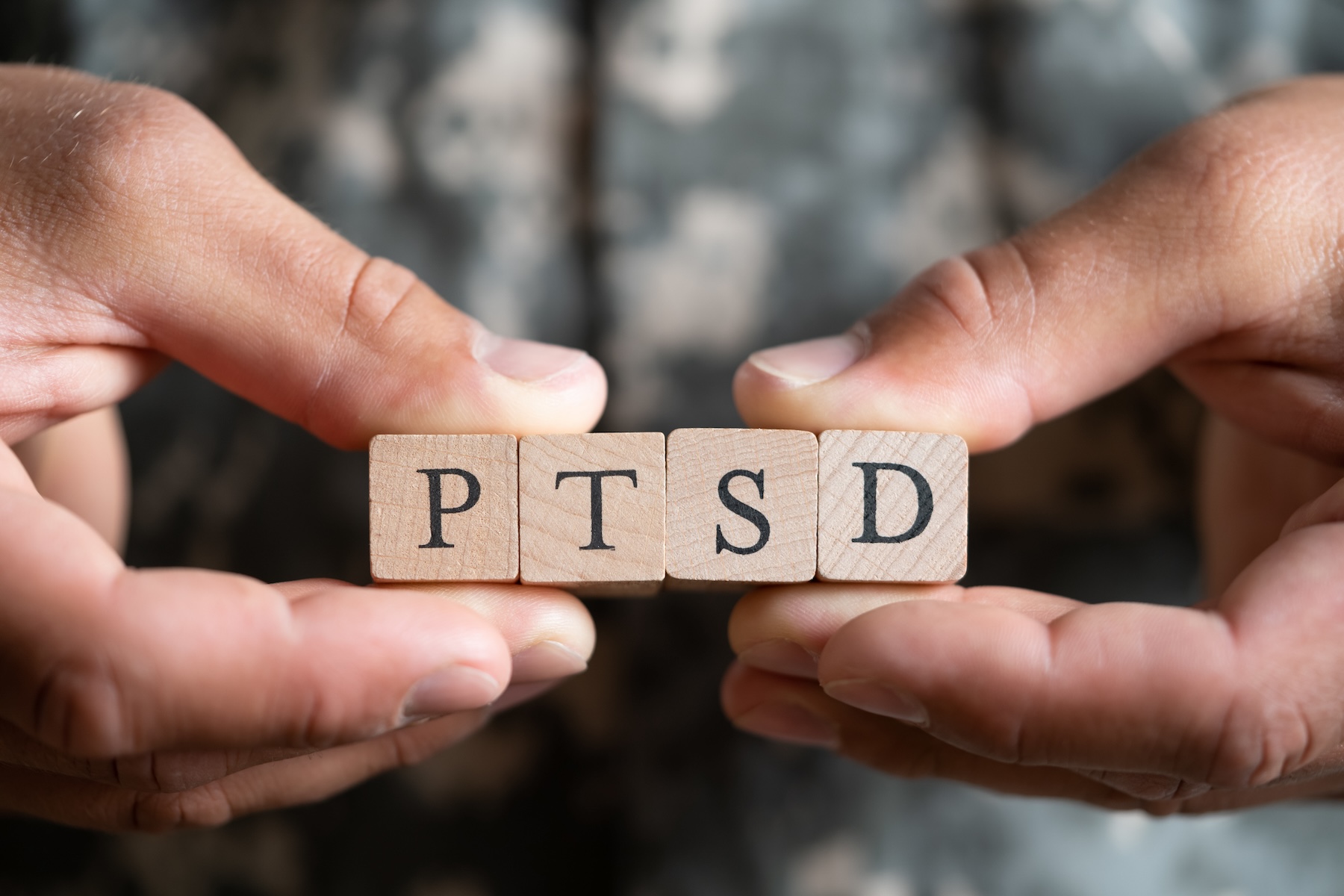Are you wondering if you could be experiencing PTSD? If you have had a traumatic experience and find yourself struggling to cope weeks, months, or years later, you may have post-traumatic stress disorder (PTSD). While right now you may be feeling like your life will never be the same, it may help to know that PTSD is not uncommon and is treatable.
Sometimes identifying PTSD is straightforward. People often think of a war veteran who returns from combat and experiences vivid flashbacks at the sound of helicopters or fireworks. But PTSD doesn’t only happen after war exposure; it can happen after any type of trauma. It may be difficult to know if what you’re experiencing after a deeply upsetting event is a normal response to the situation, or if it is a trauma response. Let’s take an in-depth look at post-traumatic stress disorder: what causes it, the symptoms, and what you can do to heal.
Exactly What Is a Traumatic Experience?
Any person who has a traumatic experience can potentially develop PTSD, and to develop PTSD, a person must have had a traumatic experience.
Sometimes it’s hard to know if a terrible experience you’ve had was “traumatic.” What exactly “counts” as a traumatic event?
A traumatic experience can be anything that is so distressing it overwhelms your ability to cope. People’s abilities to cope with distressing events vary from person to person, so something that is not traumatic for one person can be traumatic for another.[i] If you experienced, witnessed, or even heard details about something terrible and it impacted you emotionally, you may have had a traumatic experience.
When it comes to diagnosing PTSD, the official definition of trauma is “exposure to actual or threatened death, serious injury, or sexual violence.”[ii]
Trauma can occur when you:
- Experience trauma directly
- Witness a person experiencing trauma
- Learn about a traumatic event that happened to a close friend or family member
- Have indirect exposure to distressing details of a traumatic event, such as if you work closely with sexual assault survivors or collect homicide evidence.[iii]
Some traumatic events include:[iv]
- Sexual assault
- A violent attack
- Tornados, earthquakes, fires, or other natural disasters
- Unexpected death of a loved one
- Betrayal
- Domestic violence
- Illness, injury, or hospitalization
- Terrorist attacks
- Combat experience or living in a war zone
- Serious car accidents
- Witnessing or experiencing violence or suicide
- Torture
- Childhood abuse or childhood sexual abuse
Does Everyone Develop PTSD After Trauma?
Not everyone who has a traumatic experience will develop PTSD. Many people experience a variety of common symptoms after a traumatic event, but most people heal naturally and do not develop PTSD.
Following are some initial responses to a traumatic event that are considered normal if they lessen over time:
- Exhaustion
- Confusion
- Anxiety
- Feeling agitated
- Feeling alert, jumpy, or hypervigilant
- Feeling numb or detached
These reactions, although they are similar to PTSD symptoms, are not considered PTSD if they naturally become less severe as time passes. If symptoms linger and remain severe for at least one month, it could be a sign of PTSD or another trauma-related disorder.
If you are struggling emotionally with symptoms like anxiety, hypervigilance, having difficulty relaxing or feeling safe, or struggling to enjoy things that used to bring you happiness, you could likely benefit from talking with a mental health provider regardless of whether you officially have PTSD; we encourage you to reach out to our office so we can connect you with one of our qualified therapists who can help you heal. But you may want to understand right now what is causing your distress. We understand that need to know what you’re dealing with.
What Are the Symptoms Of PTSD?
You could be diagnosed with PTSD if you had a traumatic experience at some point in your life and you’re experiencing symptoms that have lasted at least one month, affect several specific areas of functioning, and make it difficult or impossible to go about your normal daily life.
Here are the specific types of symptoms a person with PTSD has after a traumatic experience:
Ongoing Symptoms
Many people experience PTSD-like symptoms soon after a traumatic experience. For most people, these symptoms become less severe as the person realizes they are safe and begins to get back to their normal routines. People with PTSD, however, experience disruptions for at least a month, and symptoms do not lessen in severity.
Intrusion Symptoms
People diagnosed with PTSD experience at least 1 intrusion symptom, sometimes called re-experiencing symptoms.[v] These include:
- Flashbacks, which can feel like you’re reexperiencing the traumatic event
- Nightmares about the event
- Intense or prolonged distress when reminded of the traumatic experience
- Measurable physical symptoms, like rapid heart rate, when reminded of the traumatic event
- Intrusive thoughts
Intrusive thoughts are thoughts you don’t want to think about but can’t seem to fight off. If you find yourself thinking about the distressing event more than you want to or at times that you don’t want to think about it, you are experiencing an intrusion symptom.
Avoidance Symptoms
Do you find yourself staying away from people, places, events, or objects that may remind you of your traumatic experience? Do you go to great lengths to avoid talking or thinking about the event? If so, you may be experiencing avoidance symptoms. Avoidance is one symptom many people with PTSD experience.
Arousal and Reactivity Symptoms
People with PTSD may feel unable to relax, have chronic muscle tension, may startle easily, and may become more irritable than usual with little provocation. People with PTSD experience at least 2 of the following symptoms:
- Irritability or uncharacteristic aggressive outbursts
- Reckless behavior
- Hypervigilance and difficulty relaxing or feeling safe
- Startling easily
- Difficulty concentrating
- Sleep disturbances
Mood and Cognition Symptoms
Sometimes a traumatic experience changes how a person views themselves and the world. Before the traumatic event, you may have felt like the world was a generally good place. Now, though, you may experience feelings of guilt and shame, feel like you are “bad”, feel like the world is unsafe, or feel like you are “different” from others. You may “block out” or have trouble remembering details of the trauma that you would normally be able to recall.
People with PTSD have at least 2 of the following mood and cognition symptoms:
- Inability to feel happiness, satisfaction, or love
- Feeling isolated, alienated, or detached
- Severe loss of interest in once enjoyable things
- Persistent negative emotional state, such as feeling ashamed, guilty, angry, sad, or afraid
- Inability to remember details of the traumatic event (not due to head injury)
- Have distorted, negative beliefs about one’s self or the world, such as “The world is extremely dangerous,” or “I am bad”
Symptoms Are Disruptive to Daily Functioning
In people with PTSD, symptoms get in the way of daily functioning, negatively affect relationships, impact work, and make it difficult to conduct normal, daily routines.
Can I Take Steps to Prevent PTSD After Trauma?
Not everyone who experiences trauma goes on to develop PTSD. If you have recently experienced something traumatic that is impacting you emotionally, there are some actions you can take soon after the traumatic event that might help prevent PTSD.
Get early trauma-informed therapy. Reaching out to one of our trauma-informed therapists may help you recover more quickly and may help prevent long-term complications like PTSD. Studies show that early EMDR therapy, conducted in the first one to three months after a traumatic experience, reduces PTSD symptoms and may prevent the onset of PTSD.[vi] Therapy aimed at skill building, social support, cognitive restructuring, and therapeutic exposure may also be helpful for people at risk of developing PTSD.[vii]
Seek support. Try not to isolate yourself. Social support may be protective against PTSD. Talking about your experience with someone who cares, like family, friends, or a therapist may help you heal.
Keep your routines. As soon as you can, try to get back to work or school, do your typical chores like grocery shopping and washing dishes, and keep a regular sleep and wake schedule.
Try to make meaning of what you experienced. Try to notice ways you have been strong or have coped well in the wake of trauma. Focus on the ways people have been supportive and things that went “right”. Find a way to “give back” or help others who are suffering. Notice unhelpful thoughts like self-blame and try to replace them with more helpful thoughts. Therapy can often help with replacing unhelpful thoughts with more helpful ones.
If I Have PTSD, Can I Ever Recover?
If you have PTSD, you don’t have to suffer forever. Several available treatment options are effective at treating PTSD. It is possible to live a normal life again.[viii]
Studies show that three types of psychotherapy, also called talk therapy, are effective for treating PTSD. The three most effective therapies for PTSD are:
- Cognitive Processing Therapy (CPT)
- Eye Movement Desensitization and Reprocessing Therapy (EMDR)
- Prolonged Exposure Therapy (PE)
These three trauma-informed talk therapies are well-studied, are effective, and are considered the “Gold Standard of Treatment” for PTSD.[ix] With around 12-16 hour-long sessions, these treatments consistently reduce symptoms of PTSD. Recent research has promoted the use of these specific therapy options over the use of medications for PTSD treatment.
Can Online Therapy Treat PTSD Effectively?
More than sixty studies have shown that online therapy can effectively treat PTSD.[x] Researchers have compared in-person and online Cognitive Processing Therapy (CPT), Eye Movement Desensitization and Reprocessing Therapy (EMDR), and Prolonged Exposure Therapy (PE) for treating PTSD. They found that these treatments were as effective at treating PTSD when treatment was delivered online as when it was delivered in person.
Benefits of Online Therapy for PTSD
When you’re struggling with PTSD symptoms like sleep disturbances, flashbacks, agitation, anxiety, and difficulty feeling relaxed or safe, you just want to feel better as soon as possible. But sometimes waitlists to see a qualified, trauma-informed therapist in your area can leave you waiting and suffering for months.
Online therapy can help you access highly qualified, trauma-informed therapists as soon as you choose to take that step toward healing, because with online therapy, you can access therapists near and far.
Additionally, sometimes PTSD makes it hard to feel safe leaving your home, riding in a car, or going someplace unfamiliar. With our online therapy, you can be treated by one of our licensed therapists from the safety, comfort, and privacy of your own home.
Heal From PTSD With Our Online Therapy
Research has shown that most people experience at least one traumatic event in their lifetimes. Trauma can be life-changing, but it doesn’t have to be. We offer evidence-based, effective therapy options to help you overcome symptoms like hypervigilance, jumpiness, trouble sleeping, intrusive thoughts, or feeling like you can’t face people, places, or things that remind you of that terrible memory.
When you’re ready to take the first step toward healing, simply call our office. We’ll connect you with a qualified, trauma-informed, online therapist who can help you overcome PTSD from the safety and comfort of your own home.
References
[i] “VA.Gov | Veterans Affairs,” General Information, accessed March 14, 2025, https://www.ptsd.va.gov/professional/treat/essentials/history_ptsd.asp.
[ii] “Post-Traumatic Stress Disorder – National Institute of Mental Health (NIMH),” accessed March 10, 2025, https://www.nimh.nih.gov/health/publications/post-traumatic-stress-disorder-ptsd.
[iii] Sukhmanjeet Kaur Mann, Raman Marwaha, and Tyler J. Torrico, “Posttraumatic Stress Disorder,” in StatPearls (Treasure Island (FL): StatPearls Publishing, 2025), https://www.ncbi.nlm.nih.gov/books/NBK559129/.
[iv] “Natural Recovery vs. PTSD | International Society for Traumatic Stress Studies,” accessed March 10, 2025, https://istss.org/public-resources/trauma-basics/natural-recovery-vs-ptsd/.
[v] “Post-Traumatic Stress Disorder – National Institute of Mental Health (NIMH).”
[vi] Elan Shapiro and Louise Maxfield, “The Efficacy of EMDR Early Interventions,” Journal of EMDR Practice and Research 13, no. 4 (November 1, 2019): 291–301, https://doi.org/10.1891/1933-3196.13.4.291.
[vii] {Citation}
[viii] “VA.Gov | Veterans Affairs,” General Information, accessed March 16, 2025, https://www.ptsd.va.gov/understand_tx/tx_basics.asp.
[ix] Christian Schrader and Abigail Ross, “A Review of PTSD and Current Treatment Strategies,” Missouri Medicine 118, no. 6 (2021): 546–51.
[x] “Is Online Therapy Right for You?,” accessed March 16, 2025, https://www.uclahealth.org/news/article/is-online-therapy-right-for-you.



